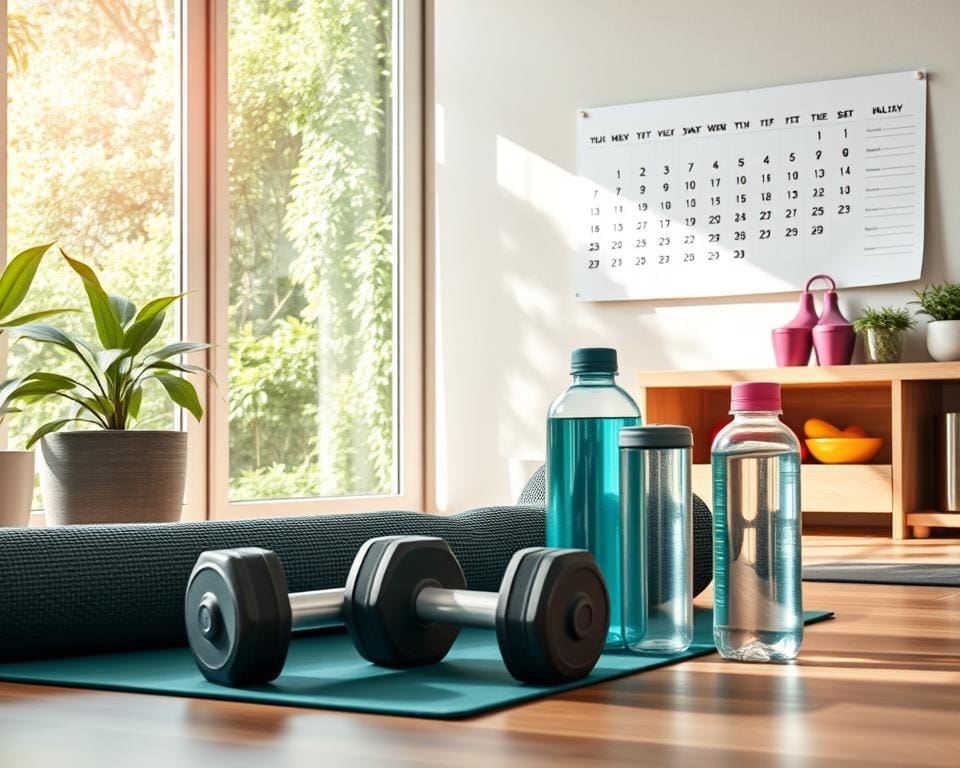Embarking on a fitness journey can often feel overwhelming, but learning how to set realistic fitness goals is crucial for success. To achieve lasting health improvements, it’s essential to identify personal needs and circumstances before diving into any workout regimen. Often, individuals struggle with fitness goal setting due to arbitrary targets that lack proper foundation. However, by developing effective milestones, one can maintain motivation and focus throughout this transformative journey.
In this guide, we will explore insightful fitness goal setting tips, ensuring you can start setting achievable workout targets that align with your lifestyle and aspirations. Reaching your fitness goals isn’t just about the end result; it’s about creating a sustainable path that fosters personal growth and steadfastness in your health pursuits.
Understanding the Importance of Fitness Goals
Establishing fitness goals plays a vital role in personal development and growth. These targets not only provide a framework for tracking progress but also ignite a spark of motivation that can drive individuals towards better health. When embarking on the journey of achieving health goals, clarity becomes essential.
The Role of Fitness Goals in Personal Growth
Setting specific fitness goals can serve as a solid foundation for personal growth. Each milestone met contributes to a sense of accomplishment, which bolsters self-esteem. Goals can vary greatly, from increasing endurance to improving strength, and the personal achievement derived from reaching them can profoundly impact one’s overall well-being. By incorporating fitness goal monitoring techniques, individuals gain insights into their progress, allowing for informed adjustments to their exercise routines.
How Fitness Goals Enhance Motivation and Accountability
Fitness goals inherently boost motivation. When individuals commit to exercise goal planning, they find themselves more accountable for their actions. The act of documenting goals fosters an environment of responsibility. This accountability can come from sharing goals with others or tracking achievements regularly. Recognising progress through effective monitoring creates a powerful feedback loop that can keep motivation high and discouragement low.

How to Set Realistic Fitness Goals
Setting realistic fitness goals begins with an understanding of where you currently stand and what you truly need. Identifying your fitness level is a vital step to ensure you’re on a path tailored to your capabilities. Creating fitness milestones becomes achievable when goals are realistic and aligned with personal strengths.
Identifying Your Fitness Level and Needs
Knowing your baseline fitness level lays the groundwork for effective goal setting strategies. Consider the following elements:
- Current fitness assessment: Evaluate your physical condition through activities like running or strength training.
- Medical history: Take into account any health conditions that may affect your fitness journey.
- Personal interests: Discover which activities you enjoy most, as this will keep you motivated.
Smart objective setting helps balance ambition with realism. Break down larger goals into smaller, manageable objectives to motivate progress and success. Acknowledging your unique fitness needs offers a pathway to achieving lasting results.
Assessing Your Lifestyle and Time Constraints
Understanding your lifestyle is critical when establishing a fitness routine. Assess how factors like work, family commitments, and social life influence your ability to exercise. Effective goal setting strategies should consider these aspects.
- Daily schedule: Identify when you can realistically commit to workouts, whether it’s early mornings or evenings.
- Intensity and duration: Tailor your sessions to fit within the time you can dedicate without feeling overwhelmed.
- Resource availability: Determine what equipment or facilities are accessible to you for your chosen fitness activities.
Balancing dedication and practicality leads to smart objective setting that resonates with everyday life. By aligning fitness milestones with your actual circumstances, sustainable progress will become a natural outcome of your efforts. Embrace the journey by recognising that your goals should reflect both your aspirations and your reality.
Effective Goal Setting Strategies for Beginners
For those embarking on a fitness journey, understanding how to establish realistic and attainable goals is paramount. To aid beginners in setting achievable workout targets, utilising the SMART framework is highly effective. This method emphasises the importance of creating objectives that are Specific, Measurable, Achievable, Relevant, and Time-bound, aligning your goals with your personal aspirations and capacity.
Utilising the SMART Framework for Goal Setting
The SMART framework serves as a practical guideline for crafting well-defined fitness goals. Begin by identifying Specific objectives that focus on what you truly want to achieve. Ensure they are Measurable, allowing you to track progress and celebrate milestones. Setting Achievable targets means assessing your current capabilities and ensuring your goals are within reach, while being Relevant ensures your fitness journey aligns with your personal values. Finally, establishing a Time-bound framework creates a sense of urgency, motivating you to stay committed.
Avoiding Common Pitfalls in Goal Setting
While fitness goal setting tips abound, it is crucial to be mindful of common pitfalls. One primary mistake is setting vague goals, such as “getting fit” instead of specific targets like “jogging for 30 minutes three times a week.” Additionally, beginners often underestimate the time required for success, leading to frustration. By addressing these challenges and focusing on a structured approach, individuals can cultivate clarity and maintain motivation on their path to health and wellness.









